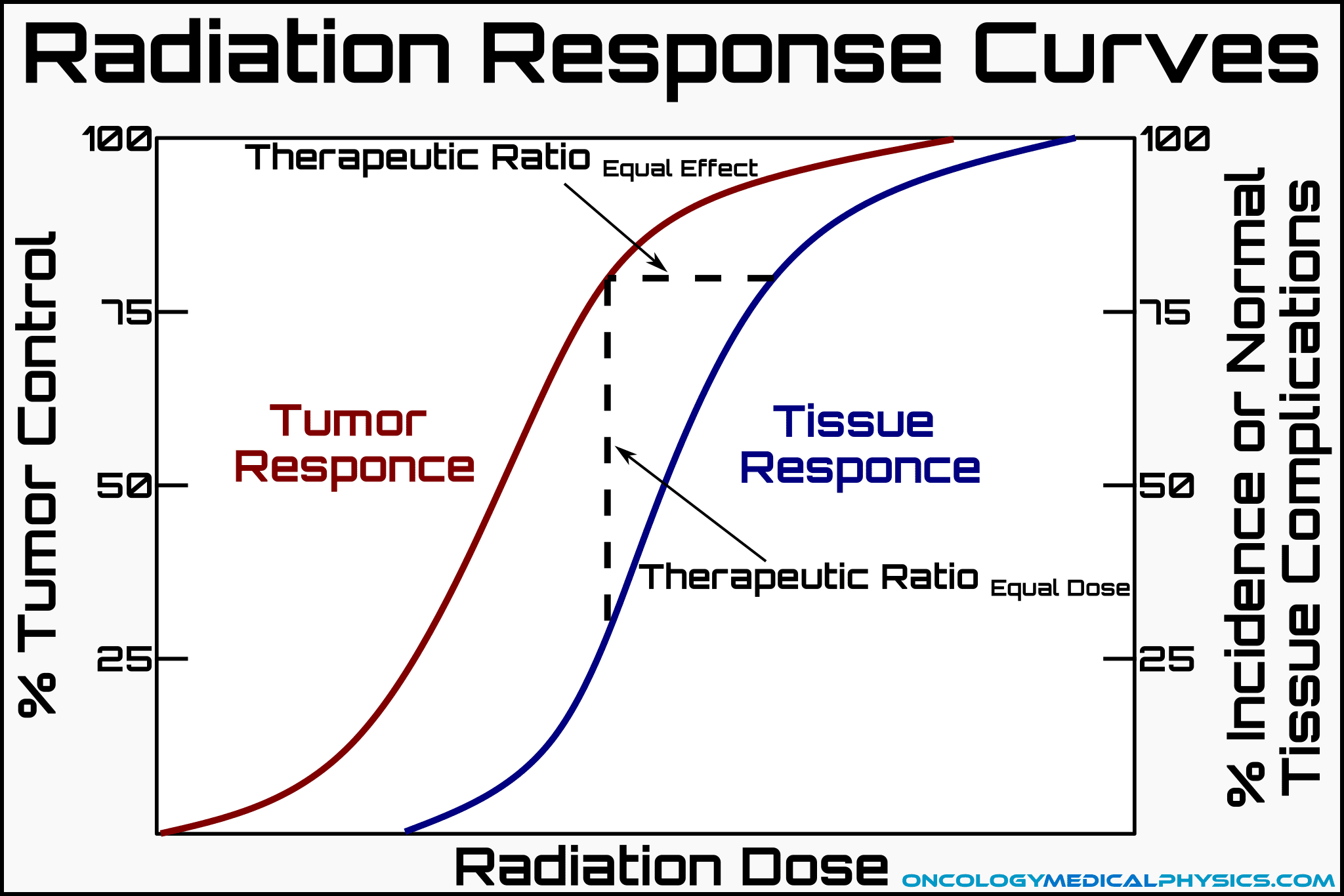Biological Responses to Radiation
Radiation Effects
Acute and Chronic Effects
Acute effects occur shortly after radiation exposure. Examples include inflammation and erythema.
Chronic effects occur after a delay period. Examples include alopecia and fibrosis.
Data from ICRP 103 and ICRP 60
| Exposed Population | Excess Relative Risk of Cancer per Sv |
|---|---|
| Entire population | 5.5% - 6.0% |
| Adults only | 4.1% - 4.8% |
Stochastic (Probabilistic) Effects
Stochastic effects are those in which the probability of effect increases with dose and the effect is binary. Because of their probabilistic nature, there is no dose threshold for stochastic effects.
Examples of stochastic effects
- Cancer induction
- Cell death
Non-Stochastic Effects
Non-stochastic effects are those in which the magnitude of effect increases with increased dose. Non-stochastic effects have a minimum dose, a threshold dose, below which the effect is not observed.
Examples of non-stochastic effects
- Erythema (skin reddening)
- Cataract induction
Total Body Exposure Responses
Total body exposure responses are non-stochastic effects. The magnitude effect is dependent upon absorbed dose.
Exposure Response Phases
1. Prodromal Phase: Minutes to days after exposure
Prodromal phase is marked by the emergence of initial symptoms. This often includes nausea, vomiting, diarrhea and general low-level symptoms.
2. Latent Phase: Days to a week after exposure
During the latent phase, symptoms which began in the prodromal phase are temporarily reduced or eliminated.
3. Manifest illness: Days to weeks after exposure
In this phase, the primary symptoms, outlined in the table at right, occur.
4. Death or recovery
| Syndrome | Dose Range | Signs/Symptoms | Survival |
|---|---|---|---|
| Hematopoietic Syndrome | 1-6Gy |
|
|
| Gastrointestinal Syndrome | 6-30Gy |
|
|
| Neurovascular Syndrome | >30Gy |
|
|
Organ Responses
Parallel and Serial Organs
Organs vary in their sensitivity not only to the amount of radiation dose they receive, but also to the distribution of that dose. Organs may be divided into sub-units. Each sub-unit may be functional or non-functional following radiation damage. Sub-units may be as small as cells or as large as lobes of the liver.
Serial Organs are organs in which disabling any sub-unit causes the entire organ to fail.
Parallel Organs are organs in which many or all of the sub-units must be disabled to cause organ failure.
| Serial Organs | Parallel Organs |
|---|---|
| Spinal Cord | Lungs |
| Brain Stem | Liver |
| Optic Structures | Kidneys |
Organ Specific Exposure Responses
| Organ | Toxicity | Dose Threshold |
|---|---|---|
| Skin (Hair) | Epilation (hair loss) | 3Gy |
| Skin | Erythema (skin reddening) | 6Gy |
| Skin | Dry Desquamation (sores) | 12Gy |
| Skin | Wet Desquamation (oozing sores) | 25Gy |
| Skin | Radionecrosis (loss of skin) | 50Gy |
| Eyes | Cataract | 5Gy |
| Whole body | Death | 3-5Gy |
Radiation Response Curves
Therapeutic Ratio
Therapeutic ratio is an indication of how "successful" radiotherapy is likely to be when incorporating both probability of cure and probability of adverse complication. Much of conventional fractionated radiotherapy centers on attempting to maximize therapeutic ratio.
There are two mathematical formulations of therapeutic ratio; the equal dose equation and the equal effect equation. In both cases, a value greater than 1 is desired.
The equal dose equation is defined as the ratio of damage to the tumor cells to damage to normal cells for the same dose. In research, this is often taken as the dose causing a 5% complication rate over 5 years (TD5/5).
![]()
The equal effect equation is defined as the ratio of the normal tissue dose to tumor dose required to reach the same endpoint (fraction of cell death).
![]()
Navigation
Not a Member?
Sign up today to get access to hundreds of ABR style practice questions.



